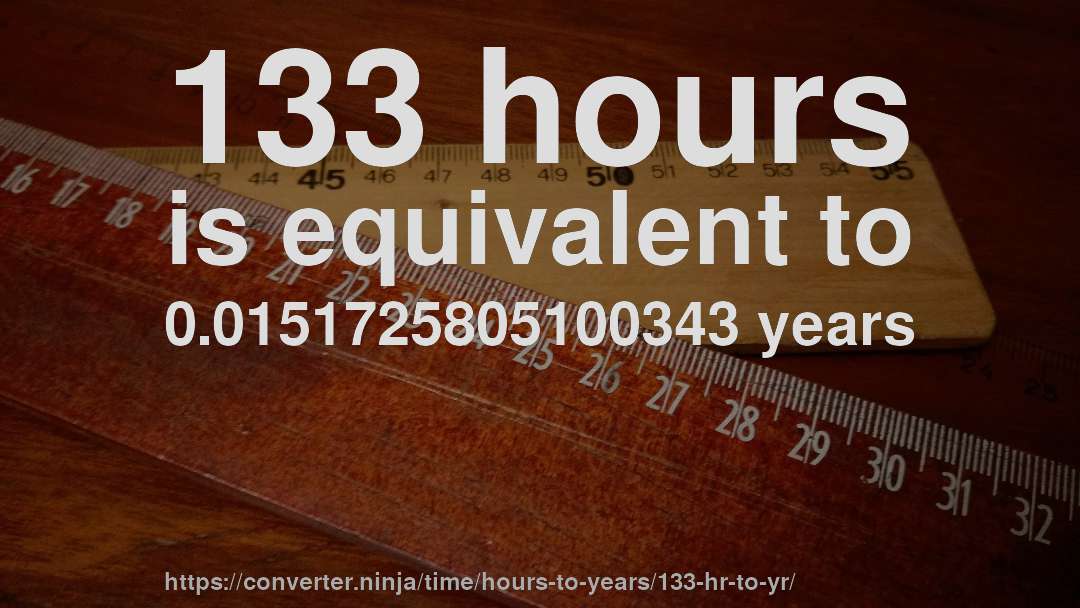
133 hours is equivalent to 0.0151725805100343 years.
We know (by definition) that: 1 hr ≈ 0.00011407955 yr
We can set up a proportion to solve for the number of years.
1 hr 133 hr ≈ 0.00011407955 yr x yrNow, we cross multiply to solve for our unknown x:
x yr ≈ 133 hr 1 hr * 0.00011407955 yr → x yr ≈ 0.01517258015 yrConclusion: 133 hr ≈ 0.01517258015 yr
The inverse of the conversion factor is that 1 year is equal to 65.9083666973233 times 133 hours.
It can also be expressed as: 133 hours is equal to 1 65.9083666973233 years.
Approximation
An approximate numerical result would be: one hundred and thirty-three hours is about zero point zero two years, or alternatively, a year is about sixty-five point nine zero times one hundred and thirty-three hours.
Units involved
This is how the units in this conversion are defined:
Hours
"Midnight (or noon) on a 12-hour analog clock An hour is a unit of time conventionally reckoned as 1⁄24 of a day and scientifically reckoned as 3,599–3,601 seconds, depending on conditions.The seasonal, temporal, or unequal hour was established in the ancient Near East as 1⁄12 of the night or daytime. Such hours varied by season, latitude, and weather. It was subsequently divided into 60 minutes, each of 60 seconds. Its East Asian equivalent was the shi, which was 1⁄12 of the apparent solar day; a similar system was eventually developed in Europe which measured its equal or equinoctial hour as 1⁄24 of such days measured from noon to noon. The minor variations of this unit were eventually smoothed by making it 1⁄24 of the mean solar day, based on the measure of the suns transit along the celestial equator rather than along the ecliptic. This was finally abandoned due to the minor slowing caused by the Earths tidal deceleration by the Moon.In the modern metric system, hours are an accepted unit of time equal to 3,600 seconds but an hour of Coordinated Universal Time (UTC) may incorporate a positive or negative leap second,[a] making it last 3,599 or 3,601 seconds, in order to keep it within 0.9 seconds of universal time, which is based on measurements of the mean solar day at 0° longitude."
Years
"A year is the orbital in which Earth moves in its orbit around the Sun. Due to the Earth's axial tilt, the course of a year sees the passing of the seasons, marked by changes in weather, the hours of daylight, and, consequently, vegetation and soil fertility. In temperate and subpolar regions around the globe, four seasons are generally recognized: spring, summer, autumn and winter. In tropical and subtropical regions several geographical sectors do not present defined seasons; but in the seasonal tropics, the annual wet and dry seasons are recognized and tracked."
[1] The precision is 15 significant digits (fourteen digits to the right of the decimal point).
Results may contain small errors due to the use of floating point arithmetic.ncG1vNJzZmibn6PDpr7Tnqlnppmjt6J706KknmeYpMKzv4ytpmaxlZa%2FtHuQbGpmoKJiwbB52Ktm